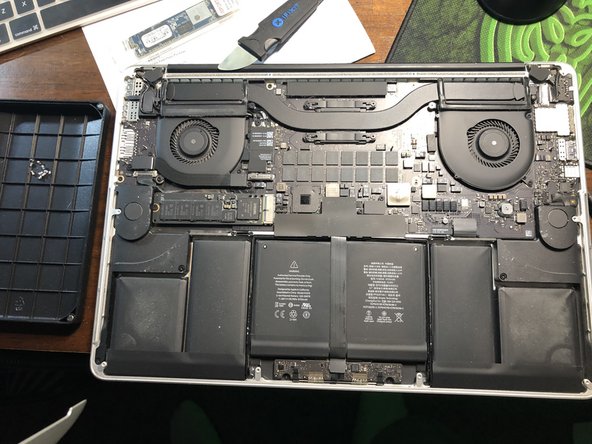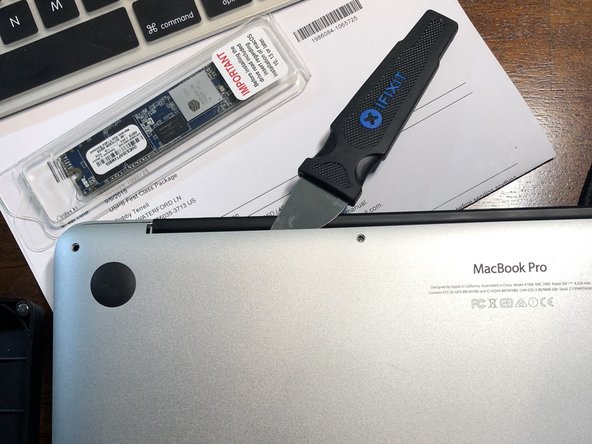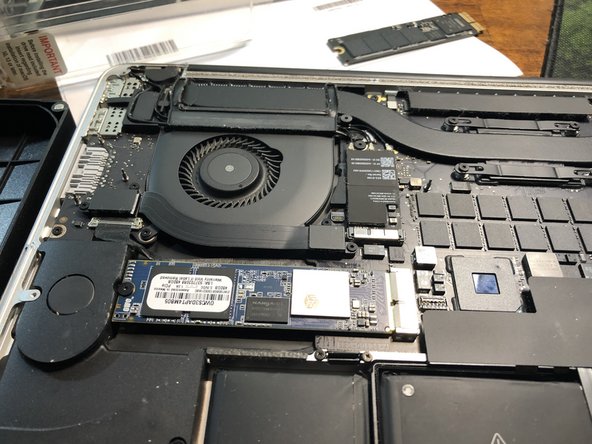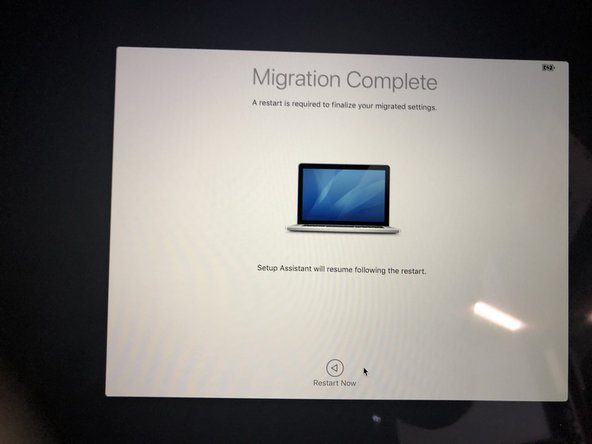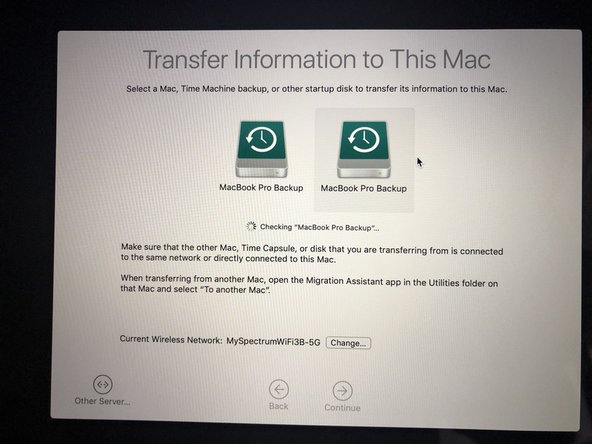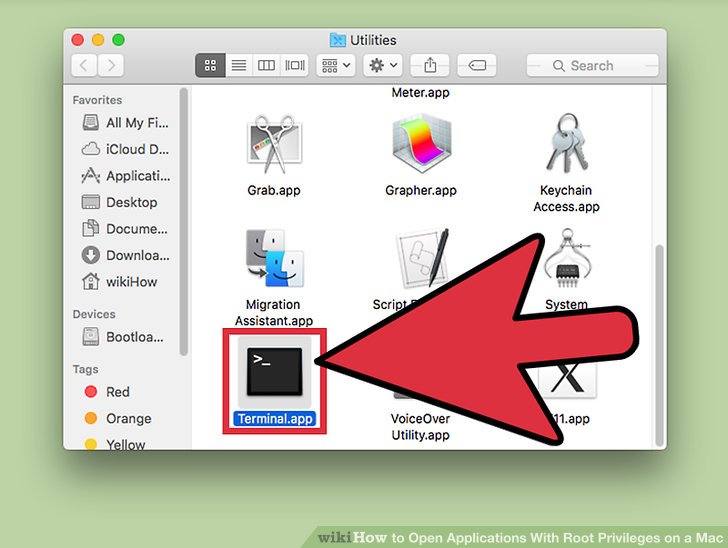How to Replace Mac SSD – Step-by-Step Guide
Duration: 45 minutes
Steps: 15 Steps
Heads up, tech whiz! Make sure you have all your tools ready to go. It’s like a high-tech treasure hunt, so let’s make this repair a breeze! If you hit a snag, just hop on over and schedule a repair with the pros.
Recently snagged an OWC Aura Pro X2 SSD / 480 GB from iFixit.com. College life has been munching through my storage space thanks to all those hefty required programs. I’m going to whip up a clone of my current hard drive onto this shiny new SSD before I dive into the install. Stick to the steps laid out in this guide to nail it without any fuss. Trust me, it’s a real time and headache saver! Plus, I had a fresh OS High Sierra ready on a separate external drive, which was a lifesaver when the new SSD played hide and seek and couldn’t be found or formatted. With the external drive’s help, I managed to update the necessary Firmware within High Sierra, recognized the elusive SSD, and got the fresh OS rolling on it. P.S.: Reading that bit again might just save your day!
Step 1
– Hold up on whisking off that back cover! First, let’s ensure all your precious data is safe. Take a bit of time to do a full backup—it’s a bit of a wait, but totally worth it. Rocking an SSD for your backups? Sweet choice! Make it a weekly ritual. And hey, for this backup, why not use that snazzy external SSD you’ve got? Once you’re set with a new SSD, you can restore everything there. Pro tip: snag a 2TB SSD from WD on Amazon for just $59. You’ll be all set for a smooth upgrade!
Step 2
– Hey there, tech whiz! So, your old SSD is rocking a mere 250gb and is multitasking with a Virtual machine on one of its partitions, huh? Time for an upgrade, superstar!
Step 3
– Oops! If you skip the backup, you’ll be saying bye-bye to any chance of getting your recent files or programs back. My backup adventure lasted a sweet 20 minutes because, guess what? I was a whole week behind and had to do a magical rebuild of a virtual drive for VMware Fusion. Need a walkthrough on this? Just pop the question right here!
Step 4
– Keep the part in its package until it’s showtime for installation! Handling it as little as possible keeps it safe from any static mischief or other bloopers.
Step 5
– I snagged this awesome tool kit from iFixit, and let me tell you, it’s been a total game-changer.
Step 6
– Power down and flip your computer to tackle the backside. Whip out your P5 star tip and get those screws out. Pop them into a no-slip container because, trust me, those tiny escape artists will try to disappear! Remember, the shorties near the monitor need their own special spot so they can return home without sticking out awkwardly. Keep it smooth and sorted!
Step 7
– You’ll need a Torx T4 bit to unscrew the SSD card. Just pry the SSD up gently to remove it—no need to go Hulk on it! Swapping the old one out might seem easier than popping the new one in, but don’t sweat it, you’ve got the right part. Make sure the new SSD is snugly in place, or it might play hide and seek in the next step. Check out the pic for a visual aid.
Step 8
– Get ready to power up in style! Press and hold the command key along with R, then hit the power button to jumpstart your OS installation via WiFi. Make sure your password is at your fingertips because you’re gonna need it pronto!
Step 9
– Okay, let’s get that new SSD ready to roll! First off, you’ll need to format it using Terminal—no special install kit required. Just make sure to disconnect any other external drives. Pop open Terminal and punch in ‘diskutil list’, then hit Return to see what you’ve got connected.
– Heads up! When you’re typing commands in Terminal, accuracy is your best friend. A single typo could send your data on an unexpected vacation, and nobody wants that!
– A wild list of disks will appear, but don’t worry, we’re hunting for our new SSD. It usually hangs out at the top of the list as the first or second drive (check out the image below). Most of the other entries? Just disk images photobombing your list. Look for something marked ‘(internal, physical)’—that’s your SSD target!
Step 10
– Pop open your Terminal and type this magic spell using the identifier from our last adventure, then press Return: diskutil eraseDisk JHFS+ MacOS /dev/disk1. Hang tight—it usually zips through in a minute or two!
– Got a different internal, physical disk? No prob! Just swap ‘disk1’ with whatever your machine’s identifier is. For this example, I’m rocking ‘disk1’.
– Give it a little time, and soon you’ll see a victorious message that says: “Finished erase on identifier” where ‘identifier’ is the number you spotted earlier.
– Your SSD is now dressed up as a Mac OS Extended (journaled) volume named ‘MacOS’. Feeling adventurous? Follow along to morph it into an APFS volume. Otherwise, if you’re all set with a Mac OS Extended (journaled) vibe, you can totally chill here.
Step 11
– Remember the identifier from the last step? It’s the one in the red box, labeled in the message that says ‘Formatting identifier as Mac OS Extended (Journaled) with name MacOS.’ Keep that in mind, it’s important!
– Next up, open Terminal and pop in this snazzy command, then press the Return key: diskutil apfs createContainer /dev/identifier. Hang tight for a minute or two while it works its magic. You’ll know it’s done when you see the message: ‘Finished APFS operation on identifier MacOS.’
Step 12
– Alright, let’s keep the good vibes rolling! Remember that identifier you spotted in the red box from our last fun step? You’re going to need that number. Just slide it into the place of ‘identifier’ in the next Terminal command, just below our cool screenshot.
– Next up, pop open Terminal and type this magic line, then hit the Return key: diskutil apfs addVolume identifier APFS MacOS Hang tight—it usually zips through in a minute or two. Once it’s done, you’ll get this cheerful message: “Finished APFS operation on identifier.” Boom! Your SSD is now rocking APFS and is all set for action!
Step 13
– Now it’s time to throw macOS Mojave onto your machine like it’s a brand new date to prom! Expect to hang tight for about 20 minutes while your device gets all dolled up and ready to roll.
Step 15
– That’s it! You’ve nailed the upgrade and migration! Kick back and revel in your tech-savvy glory.





